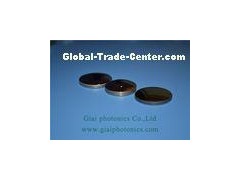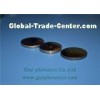Optical Dia 25mm Polished Aspheric Lenses Infrared Lenses with Silicon
Aspheric Lenses
Specifications:
| Diameter (mm) | 9.00 |
| Diameter Tolerance (mm) | +0.0/-0.1 mm |
| Clear Aperture (%) | 90 |
| Effective Focal Length EFL (mm) | 12 |
| Back Focal Length BFL (mm) | 8.14 |
| Edge Thickness ET (mm) | 4.77 |
| Center Thickness CT 1 (mm) | 4.50 |
| Center Thickness CT 2 (mm) | 1.50 |
| Center Thickness Tolerance (mm) | ±0.2 |
| Centering (arcminutes) | 3 - 5 |
| Radius R1 (mm) | 7.56 |
| Radius R2 (mm) | 12.80 |
| Radius R3 (mm) | 61.60 |
| Surface Quality | 40 - 20 |
| Substrate | N-LaK8 / N-SF57 |
| Focal Length Specification Wavelength (nm) | 587.6 |
| Coating | VIS 0° |
| Coating Specification | Front Surface: Ravg ≤0.4% @ 425 - 675nm |
| Operating Temperature (°C) | -20°C to 80°C |
| Type | Achromatic Lens |
| f/# | 1.33 |
| Numerical Aperture NA | 0.38 |
| Wavelength Range (μm) | 0.425 - 0.675 |
| RoHS | Compliant |
Description:
Aspheric Lenses are used to eliminate spherical aberration in a range of applications, including bar code scanners, laser diode collimation, or OEM or R&D integration. Aspheric lenses utilize a single element design which helps minimize the number of lenses found in multi-lens optical assemblies. Said another way, unlike conventional lenses with a spherical front surface, aspheric lenses have a more complex front surface that gradually changes in curvature from the center of the lens out of the edge of the lens. This reduction in total element count not only helps decrease system size or weight, but also simplifies the assembly process. Integrating aspheres into an application such as focusing the output of a laser diode may not only decrease total cost, but may also outperform assembli
Silicon Polished Aspheric Lens Infrared Lenses 0.425m - 0.675m High Precision








